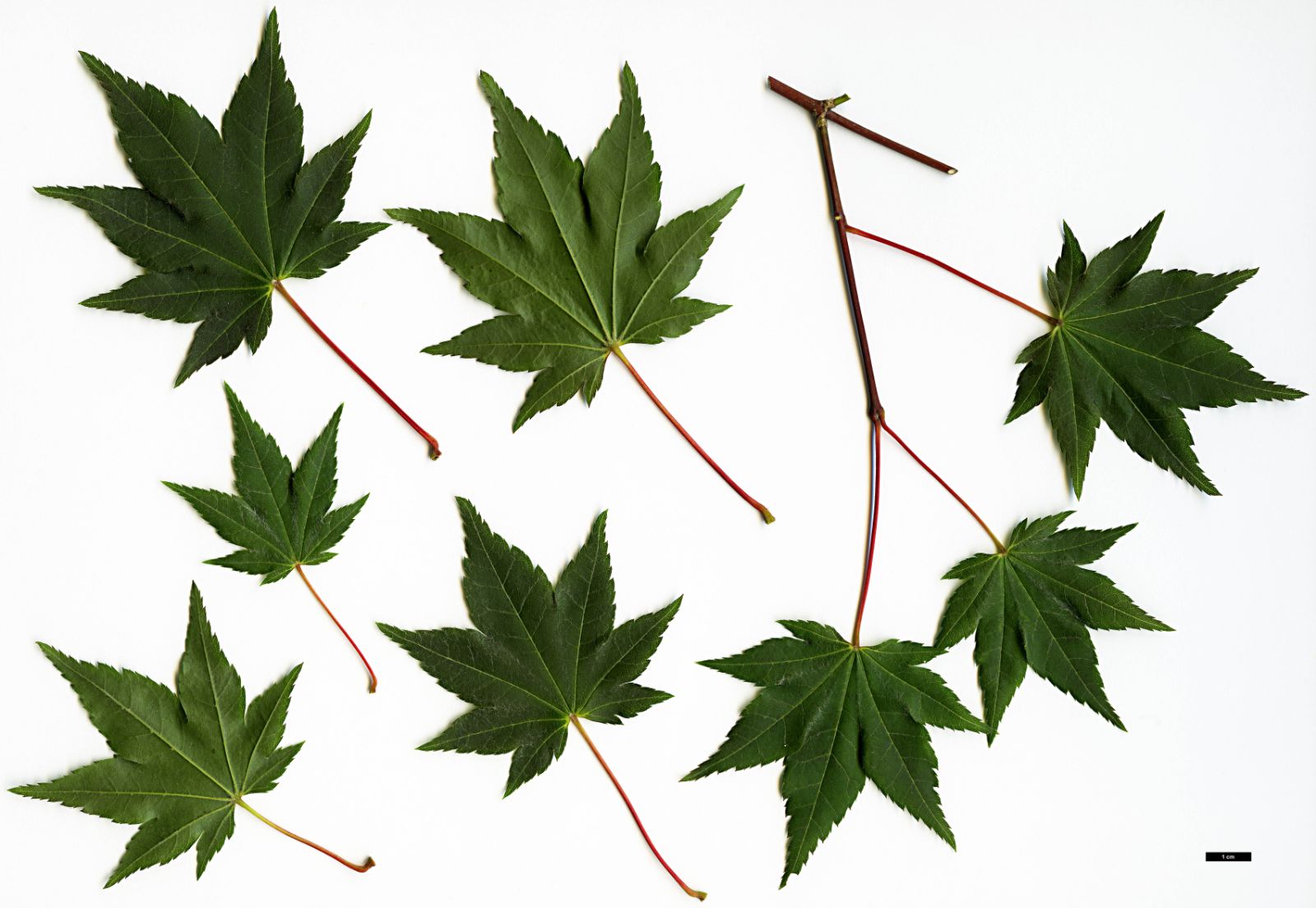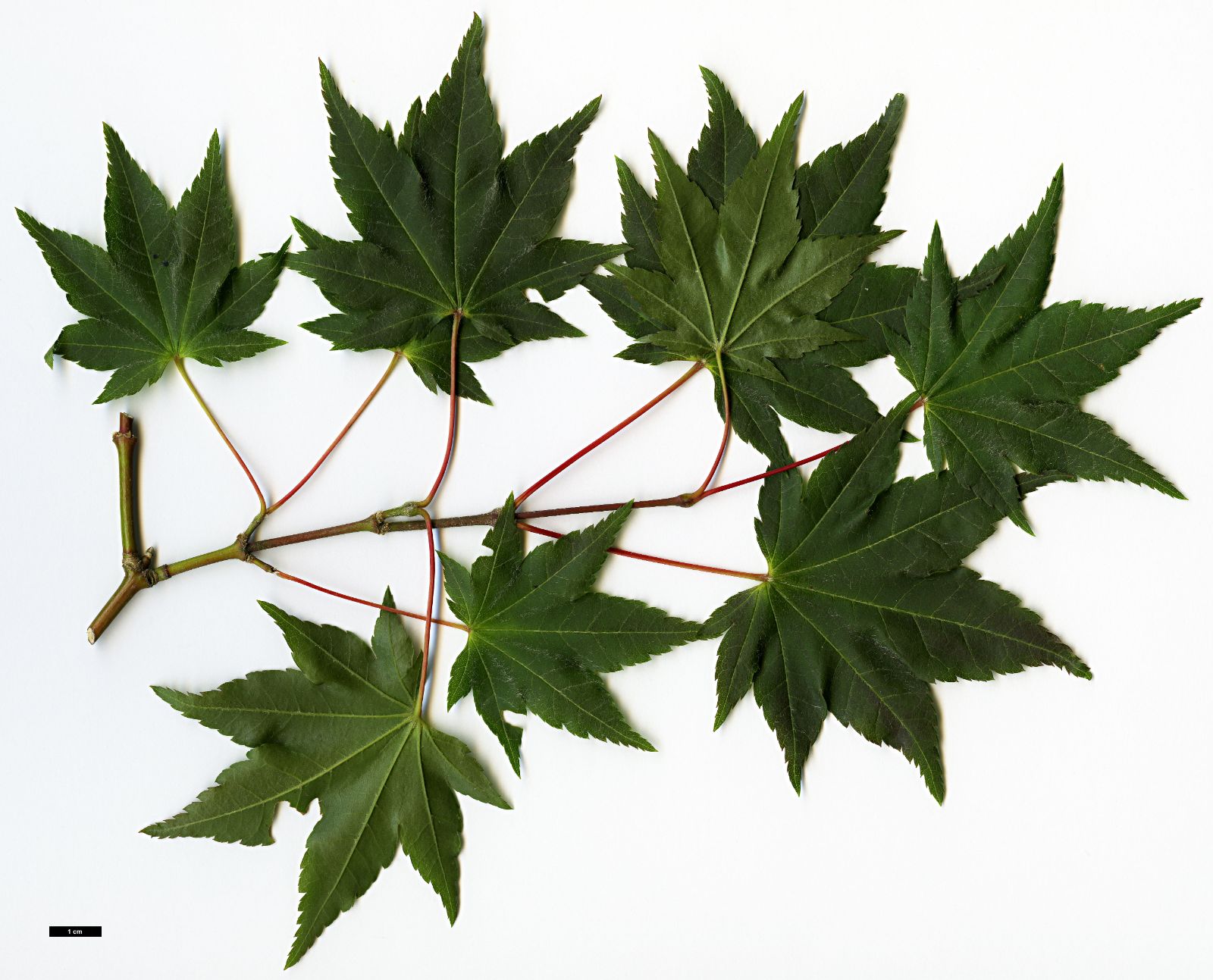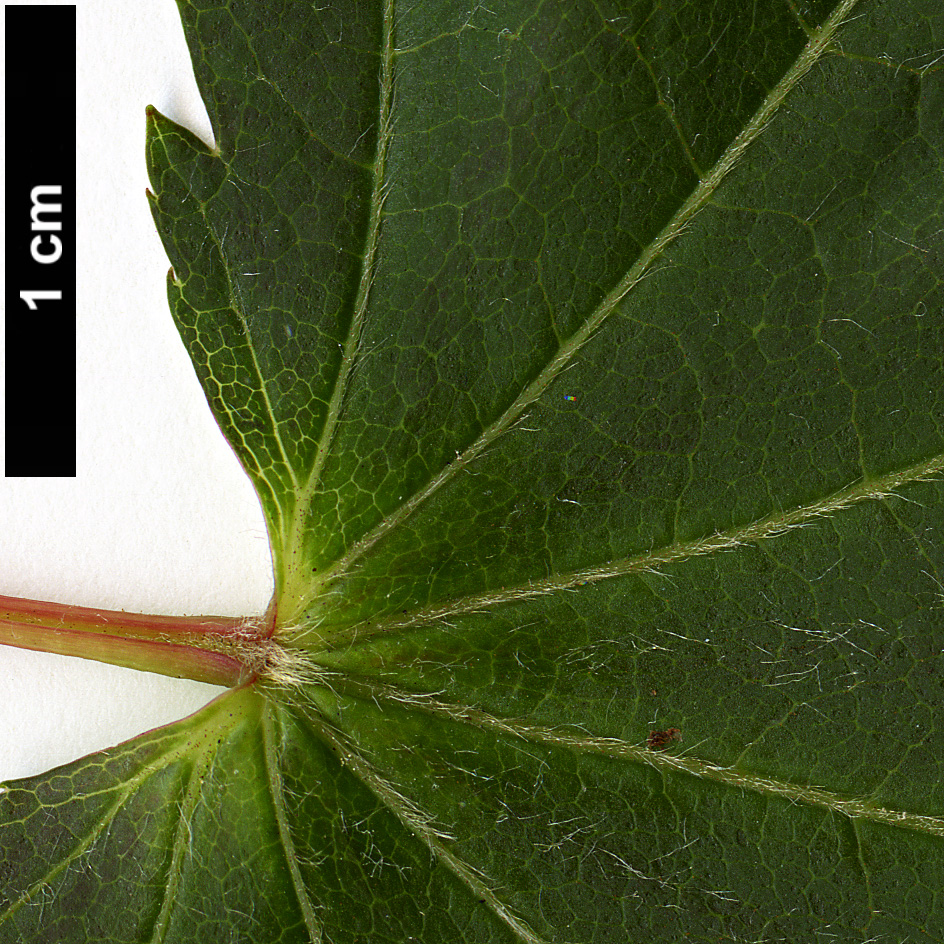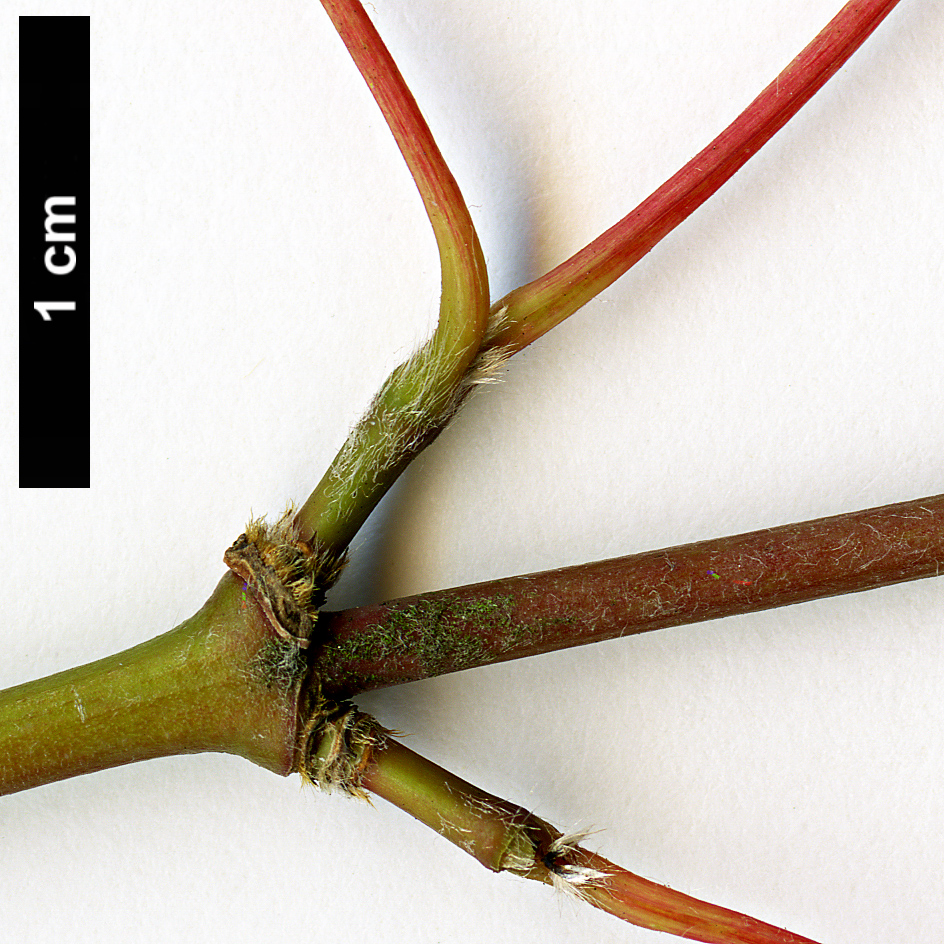Acer duplicatoserratum
Sponsor
Kindly sponsored by
a member of the International Dendrology Society
Credits
Article from New Trees by John Grimshaw & Ross Bayton
Recommended citation
'Acer duplicatoserratum' from the website Trees and Shrubs Online (treesandshrubsonline.
Genus
- Acer
- Sect. Palmata, Ser. Palmata
Synonyms
- A. palmatum var. pubescens Li
Other taxa in genus
- Acer acuminatum
- Acer amplum
- Acer argutum
- Acer barbinerve
- Acer buergerianum
- Acer caesium
- Acer calcaratum
- Acer campbellii
- Acer campestre
- Acer 'Candy Stripe'
- Acer capillipes
- Acer cappadocicum
- Acer carpinifolium
- Acer 'Cascade'
- Acer caudatum
- Acer ceriferum
- Acer chapaense
- Acer chienii
- Acer circinatum
- Acer cissifolium
- Acer × conspicuum
- Acer cordatum
- Acer coriaceifolium
- Acer × coriaceum
- Acer crataegifolium
- Acer davidii
- Acer diabolicum
- Acer distylum
- Acer divergens
- Acer elegantulum
- Acer erianthum
- Acer 'Esk Flamingo'
- Acer fargesii
- Acer fenzelianum
- Acer flabellatum
- Acer forrestii
- Acer franchetii
- Acer × freemanii
- Acer fulvescens
- Acer 'Gimborn'
- Acer ginnala
- Acer glabrum
- Acer 'Gold Coin'
- Acer granatense
- Acer grandidentatum
- Acer griseum
- Acer heldreichii
- Acer henryi
- Acer × hillieri
- Acer hookeri
- Acer hyrcanum
- Acer japonicum
- Acer kawakamii
- Acer komarovii
- Acer laevigatum
- Acer laurinum
- Acer laxiflorum
- Acer lobelii
- Acer longipes
- Acer macrophyllum
- Acer mandshuricum
- Acer maximowiczianum
- Acer maximowiczii
- Acer metcalfii
- Acer miaotaiense
- Acer micranthum
- Acer 'Mindavi'
- Acer 'Minorient'
- Acer miyabei
- Acer miyabei × campestre
- Acer monspessulanum
- Acer morifolium
- Acer 'Mozart'
- Acer oblongum
- Acer obtusifolium
- Acer okamotoanum
- Acer oliverianum
- Acer opalus
- Acer orientale
- Acer palmatum
- Acer papilio
- Acer pauciflorum
- Acer pectinatum
- Acer pensylvanicum
- Acer pentaphyllum
- Acer pentapotamicum
- Acer pictum
- Acer pilosum
- Acer pinnatinervium
- Acer platanoides
- Acer platanoides × amplum
- Acer platanoides × truncatum
- Acer × pseudoheldreichii
- Acer pseudoplatanus
- Acer pseudosieboldianum
- Acer pubinerve
- Acer pycnanthum
- Acer rubescens
- Acer rubrum
- Acer rufinerve
- Acer saccharinum
- Acer saccharum
- Acer sempervirens
- Acer 'Serpentine'
- Acer serrulatum
- Acer shenkanense
- Acer sieboldianum
- Acer sikkimense
- Acer 'Silver Cardinal'
- Acer 'Silver Ghost'
- Acer sinense
- Acer sinopurpurascens
- Acer spicatum
- Acer stachyophyllum
- Acer taronense
- Acer tataricum
- Acer tegmentosum
- Acer tenellum
- Acer tetramerum
- Acer tibetense
- Acer tonkinense
- Acer triflorum
- Acer truncatum
- Acer tschonoskii
- Acer turkestanicum
- Acer tutcheri
- Acer ukurunduense
- Acer velutinum
- Acer wardii
- Acer 'White Tigress'
- Acer wilsonii
- Acer × zoeschense
Small tree, ultimate height unknown. Branchlets covered with white pubescence, later glabrous. Leaves deciduous, 2.3–5.5 × 3–8 cm, palmately five-lobed to nine-lobed up to half-way to the base, both surfaces covered with rough, white hairs, margins sharply double-serrate, lobe apex acuminate; petiole 1.5–5 cm long, pubescent. Inflorescence corymbose, densely pubescent. Flowers small, staminate or hermaphrodite; sepals five, purplish, ovate to lanceolate, petals four, white, ovate to orbicular, stamens four. Samaras 2–3 cm long, yellowish brown when mature, wings spreading obtusely. Flowering April, fruiting September (Taiwan). Van Gelderen et al. 1994, Xu et al. 2008. Distribution TAIWAN. Habitat Deciduous forest between 1000 and 2000 m asl. USDA Hardiness Zone 6. Conservation status Vulnerable, due to overharvesting and poor regeneration. Cross-reference K90 (as A. palmatum var. pubescens). Taxonomic note Acer duplicatoserratum var. chinense C.S. Chang occurs in mainland China (Anhui, Fujian, Guizhou, southern Henan, Hubei, Hunan, Jiangsu, Jiangxi, Shandong, Zhejiang); the petioles are pubescent when young, but later become glabrous (van Gelderen et al. 1994, Xu et al. 2008).
A member of the Acer palmatum complex, A. duplicatoserratum is distinguished from its relatives by its pubescent shoots and leaves, but otherwise looks very similar to A. palmatum. It is rare both in the wild and in cultivation, although it ought not to be particularly challenging to grow. Trees from both Taiwan (from Edward Needham’s 1998 collection EN 0036) and Zhejiang in mainland China (SBG 303, 1996) are cultivated at Tregrehan, where they have been slow-growing (T. Hudson, pers. comm. 2007). There are some differences between these two stocks, but this needs investigation as the trees mature.





